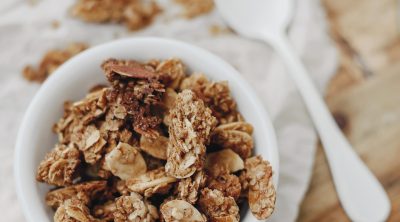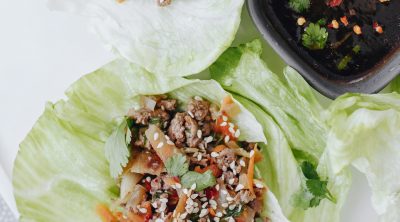
Soups are a warming, hydrating and simple way to increase your intake of nutrient-dense foods. They can also make convenient one-pot meals if they contain all the necessary ingredients for balance.
Building a balanced soup is simple if, in addition to an abundance of vegetables, there is a sufficient protein and fibre to keep you full and satisfied. When it comes to protein sources that lend well to soups, I have a few favourites:
- shredded chicken
- mini turkey meatballs
- tofu cubes
- and finally, the pantry-friendly, least expensive of the bunch: beans and legumes
Beans and legumes for the win
Beans and legumes are nutritional powerhouses. In addition to providing both fibre and protein, they also come rich in micronutrients:
- potassium
- folate
- magnesium
- iron
- zinc
Needless to say, having a few varieties on hand is the quickest and cheapest way to turn any soup into a hearty meal.
When shopping for beans and legumes, you will come across dried varieties and canned/jarred varieties. Although the nutrition facts are similar whichever way you go, the main benefit of dried beans and legumes is their deeper flavour. However, because their prep time is considerably longer due to soaking and boiling, canned and jarred legumes remain a practical option for most. For those struggling with digestive issues with beans and legumes, canned/jarred varieties are often better tolerated due to thorough cooking before packing. But don’t forget to rinse! Rinsing gets rid of excess sodium in addition to the hard-to-digest packing liquid.
Some of my favourite jarred legumes to have on hand include: Ilios lupini beans for snacking, white cannellini beans, chickpeas (garbanzos) and cranberry beans for soups and dips.

Opting for glass
Most beans and legumes are available in canned form, but whenever possible, we recommend looking for glass.
- Glass allows you to see the product you are purchasing
- Glass has a smaller carbon footprint
- Glass jars are reusable and reduces you waste impact. Use glass jars for storing sauces, smoothies, marinades or spices.
- Glass is naturally BPA-free
BPA is chemical compound and known endocrine disruptor that can leach from materials, such as plastics, into food. Since many cans are still lined with BPA, it’s reasonable to look for another option if you resort to canned foods often. Look for BPA-free cans or opt for glass, which is naturally BPA-free. This allows you to reduce your exposure of BPA, something that is especially important for younger children and women who are pregnant, breastfeeding or trying to conceive.

Healthy chicken and vegetable soup
Today’s recipe is a twist on chicken noodle soup, with white cannellini beans in lieu of noodles for an added protein and fibre kick. With a heavy vegetable base of carrot, celery, onion and kale, this soup is a must-add to your repertoire of immunity-boosting recipes this winter. Not to mention it comes together in one single pot and freezes beautifully, too.


- 2 tablespoons olive oil
- 1 large vidalia onion, diced
- 2 garlic cloves, minced
- 2 large carrots, diced
- 2 stalks celery, diced
- 2 cups of cooked, shredded chicken
- 6 cups low-sodium chicken broth
- 1/2 cup flat leaf Italian parsley, chopped
- 1 parmesan rind
- 1 jar white cannellini beans, such as ILIOS, drained (2 cups)
- 1 teaspoon kosher salt
- 1 teaspoon freshly cracked black pepper
- One bunch of kale, stems removed, chopped
- Heat the olive oil in a large pot over medium. Add the onion, garlic, carrot and celery and saute until fragrant, about 5 minutes.
- Add the chicken to the pot, along with the broth, parsley, parmesan rind and beans. Bring to a boil and simmer for 20 minutes.
- Add the salt, pepper and kale and cook until tender, about 7-10 minutes.
- Adjust the seasoning and serve.
- Freezing instructions: Allow the soup to come down in temperature. Transfer to a freezer safe container or bag and freeze up to 2 months.




Leave a comment